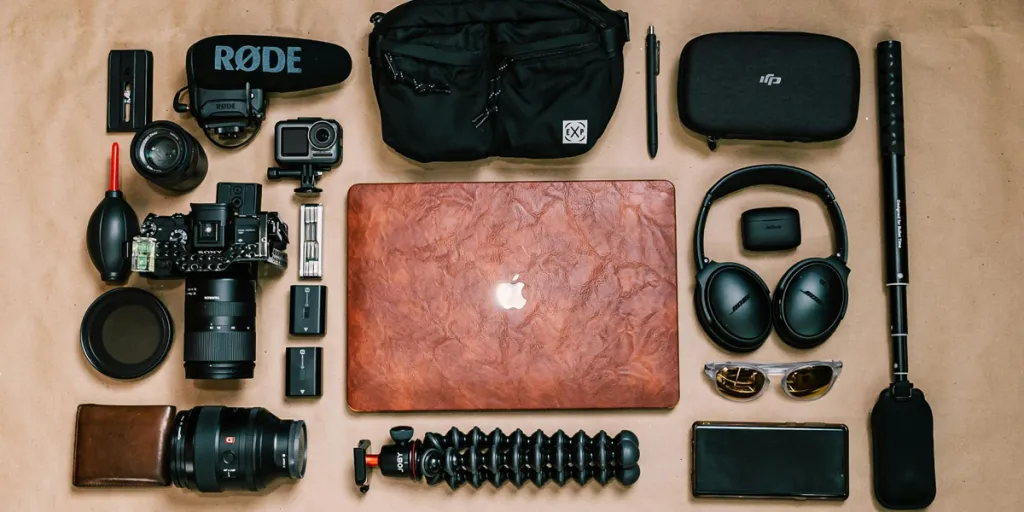Having the right equipment is essential for any professional photographer operating a studio. Basic camera gear is barely enough to capture truly outstanding images that sell. Professionals need an assortment of specialized lighting, backdrop options, camera supports, and accessories that work in sync to deliver optimal results.
This article has insights on all the necessary gear to equip your studio, as well as some features to look for when picking it out.
Table of Contents
Cameras
Lenses
Lighting equipment
Tripods and other camera supports
Professional photography accessories
Studio backdrop
Conclusion
Cameras
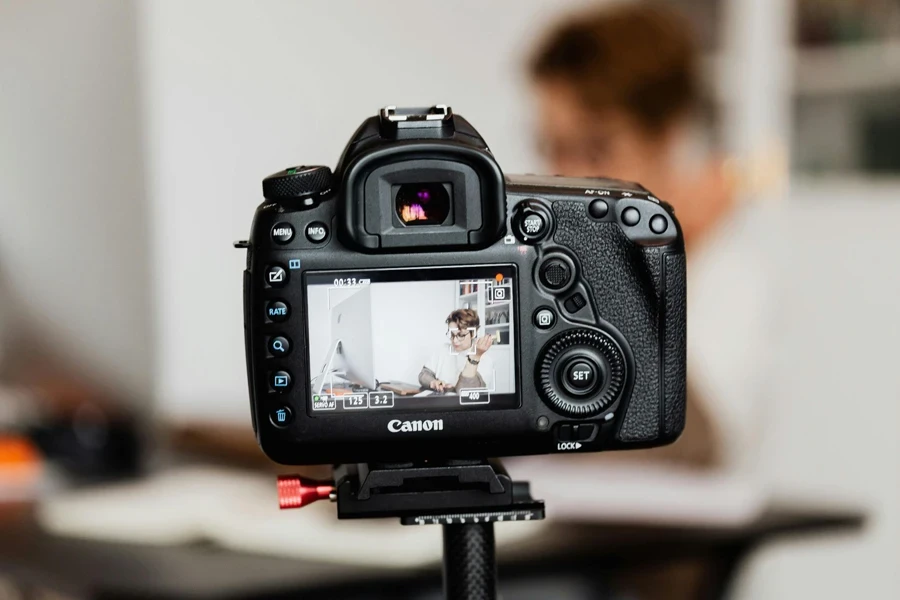
With the right skills under your belt, a reliable, fast, auto-focus professional camera is essential for capturing sharp images. You want a camera with a high megapixel count, probably 13–48 MP resolution, or even more if the budget allows.
In video production, for instance, an 8K, 4K, or 1080p high-definition resolution would suffice as it offers stellar clarity and video editing.
Memory size and battery life are other top features worth looking at when scouting for a professional photography camera. For a professional photographer looking to take a large number of high-quality photos, any storage capacity above 64 GB would suffice.
You also want to work with a professional camera whose battery life could last anywhere between 4 and 6 hours. Since studio cameras use removable, rechargeable batteries, photographers can carry spare batteries and swap them out as needed.
Make sure to check whether the camera has ample memory card storage capacity to avoid running out of space mid-shoot. Many professional cameras offer dual memory card slots, allowing photographers to simultaneously use two high-capacity memory cards.
Lenses
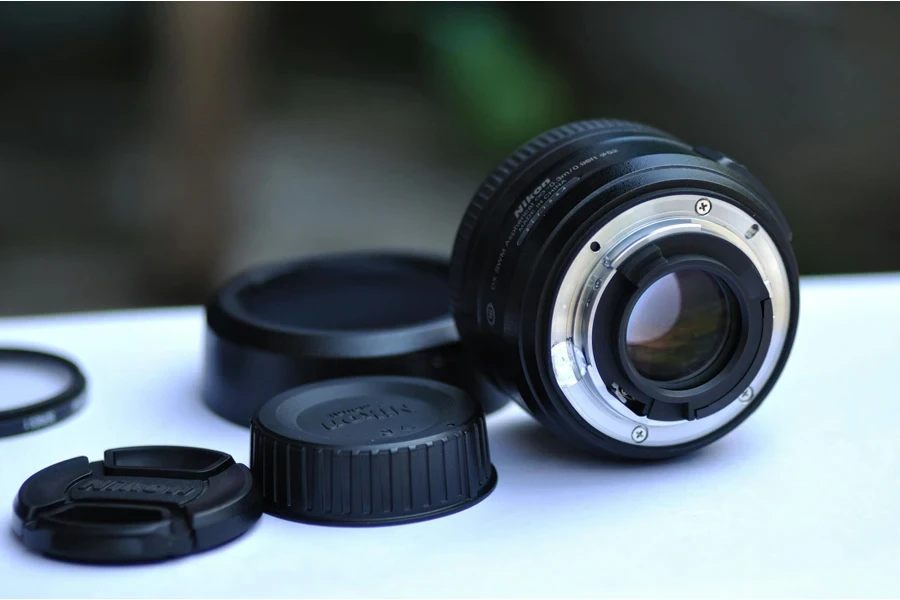
Photography cameras come in different lens options—zoom, wide-angle, macro, and specialty. The lens option varies depending on the camera system (full-frame or crop sensor) and the project’s specific requirements. For instance, wide-angle lenses ranging between 14–35 mm in focal length are best for capturing large products, interior shots, or creating dramatic perspectives in fashion.
On the other hand, you’ll find macro lenses quite suitable for extremely detailed close-up shots, such as product photography, food photography, and capturing intricate textures or small objects. Prime lenses are a must-have in the studio for portraits, while specialty lenses like the fisheye are great for landscapes and artistic effects.
Beyond focal length, a lens’s openness to light (aperture) is key. Wider apertures (f/1.4, f/1.8) let in more light for low-light shots and blurry backgrounds but come at a premium price. Lenses also need to match your camera’s mount (Canon EF, Nikon F, etc.) to ensure compatibility.
To combat camera shake, many lenses boast image stabilization for sharper pictures, which is especially helpful for low-light or telephoto photography. For fast-moving subjects in sports or portraits, a lens’s autofocus speed and accuracy are crucial.
Finally, the quality of materials used in the lens (think special elements and coatings) affects image quality and durability, often justifying the higher price tag of high-end lenses.
Lighting equipment
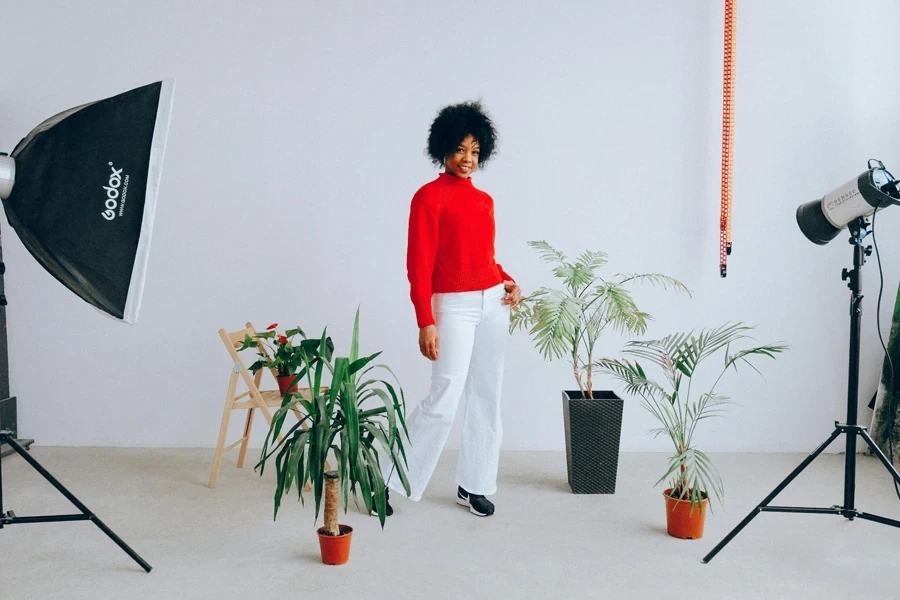
In a studio setting, natural light is often insufficient or inconsistent. As a result, having dedicated studio lighting gear is important to maintain a cohesive look across multiple shots. Controlling the intensity, direction, and ratio of light can also help create different moods for each shooting scene.
A well-equipped studio should have a variety of continuous lighting (LED panels and fluorescent lights) and strobe lighting (monolights and pack-and-head systems). It also includes a range of modifiers, such as softboxes, umbrellas, reflectors, and grids.
Choosing studio lights is determined by what you shoot. Continuous lights, like LEDs, allow you to see the light placement on the fly, but they may not be super powerful. Strobes, like flashes, freeze action but require test shots to get the look just right.
Light modifiers are known for tweaking light intensities. Softboxes soften light for portraits; reflectors bounce light into shadows; and grids or barn doors control light direction. Look for lights with a high CRI for accurate colors. Consider portability (AC vs. battery) and wireless triggers for freedom of movement.
Finally, many photographers choose a brand and stick with it. This lets you mix and match lights, modifiers, and accessories easily. With a well-matched kit, you can focus on capturing your creative vision, not wrestling with technical hiccups.
Tripods and other camera supports
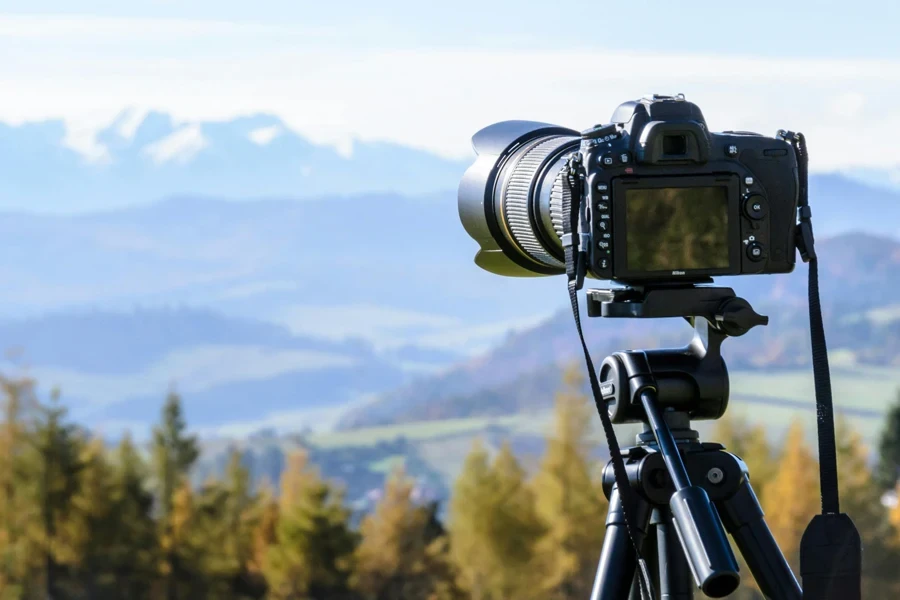
Tripods and monopods are essential supports to keep your camera perfectly still for slow-speed exposures or tack-sharp focus. Other camera supports needed for a professional photo studio include sliders, gimbals, and articulating arms.
Camera sliders are rail systems that move a camera horizontally on a flat surface, tripod, or light stand to create smooth, slow movements. For videographers, gimbals are a must-have—these motorized stabilizers keep footage level and steady even as you move about. And articulating arms, with their flexible, lockable positioning, enable unique angles for product photography.
Professional photography accessories
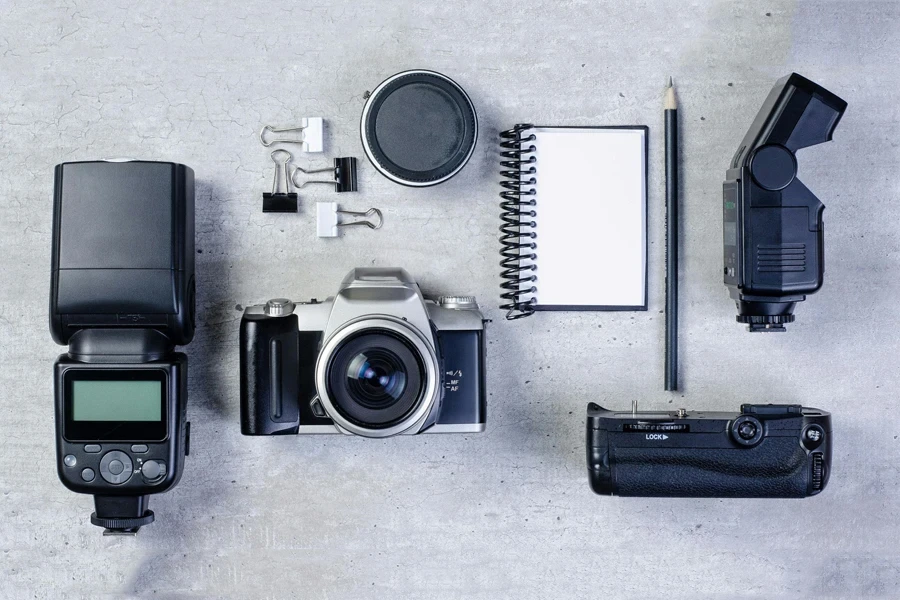
Filters
Filters and gels are super handy accessories for adding color to your lighting setup. Slap a red gel over your key light, for instance, and suddenly, your subject is bathed in a vibrant crimson glow. This adds a whole new dimension and mood to the image.
Filters work the same way, but they attach to the front of your camera lens instead of the light source. A common use would be throwing on a warming or cooling filter to adjust a shot’s color cast subtly. Or you can go bold with a vivid magenta filter for that punchy look popular in modern portraiture.
Camera care and transportation
A rolling camera bag is necessary when transporting expensive gear safely between locations. Choose one with dense padding and customizable dividers to nestle your camera bodies, lenses, flashes, and other delicate items.
Vests or chest packs take things further by keeping the most vital tools within arm’s reach while shooting. Instead of digging through a bag, the vest has pockets and holsters for stashing extra batteries, cables, memory cards, lens cloths, and more. Therefore, users can quickly swap out a drained battery or change lenses while keeping their eyes on the camera.
Studio backdrop
Studio backdrops come in various styles, such as seamless paper, muslin, canvas, or rigid collapsible types. A green screen or chroma key screen would also suffice, as it easily isolates your subject digitally from the background during editing.
Conclusion
Quality equipment is undoubtedly the most critical part of a professional photography studio. Fortunately, most of this equipment is bundled into ready-made kits, making it easy for beginners to shop.
Manufacturers offer studio packages with light stands, umbrellas, backdrops, and other basics, all included. That’s an easy way to get up and running. But over time, you’ll likely pick up individual pieces here and there to customize your arsenal, too.
If you’re looking to outfit your professional photography studio, you’ll find a ton of great equipment options over on Alibaba.com.
